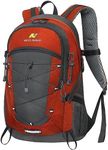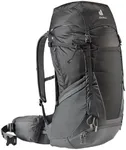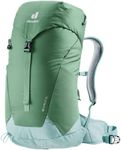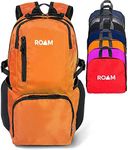Buying Guide for the Best Womens Hiking Backpacks
Choosing the right women's hiking backpack is crucial for a comfortable and enjoyable hiking experience. The right backpack will fit well, distribute weight evenly, and have enough space for all your essentials. When selecting a hiking backpack, consider factors such as size, fit, weight, and features. Understanding these key specifications will help you make an informed decision and find the best backpack for your needs.CapacityCapacity refers to the volume of the backpack, usually measured in liters. This spec is important because it determines how much gear you can carry. For day hikes, a smaller capacity (15-30 liters) is sufficient. For overnight trips, look for a medium capacity (30-50 liters). For multi-day hikes, a larger capacity (50-70 liters) is necessary. Choose a capacity based on the length of your hikes and the amount of gear you need to carry.
FitFit is crucial for comfort and involves the backpack's size and adjustability. Women's backpacks are designed to fit the female torso, with narrower shoulder straps and a shorter back length. Ensure the backpack fits your torso length and has adjustable straps for a snug fit. A well-fitting backpack will distribute weight evenly and reduce strain on your back and shoulders. Try on different backpacks and adjust the straps to find the best fit for your body.
WeightThe weight of the backpack itself is important because it adds to the total load you will carry. Lightweight backpacks (1-2 pounds) are ideal for day hikes, while medium-weight backpacks (2-4 pounds) are suitable for overnight trips. Heavier backpacks (4-6 pounds) are designed for multi-day hikes and can carry more gear. Consider the weight of the backpack in relation to the gear you plan to carry and your own strength and endurance.
Frame TypeBackpacks come with different frame types: internal, external, and frameless. Internal frame backpacks are the most common and provide good support and stability, making them ideal for most hikes. External frame backpacks offer better ventilation and are suitable for carrying heavy loads on well-maintained trails. Frameless backpacks are lightweight and flexible, best for ultralight hiking. Choose a frame type based on the terrain and the weight of your gear.
FeaturesFeatures such as pockets, compartments, hydration compatibility, and attachment points can enhance the functionality of a backpack. Pockets and compartments help organize your gear, while hydration compatibility allows you to carry a water reservoir. Attachment points are useful for carrying trekking poles, sleeping bags, or other gear. Consider which features are important for your hiking style and choose a backpack that meets your needs.
Material and DurabilityThe material of the backpack affects its durability and weather resistance. Common materials include nylon and polyester, which are durable and water-resistant. Some backpacks also have reinforced areas for added durability. Consider the conditions you will be hiking in and choose a backpack made from materials that can withstand wear and tear. A durable backpack will last longer and protect your gear from the elements.





















